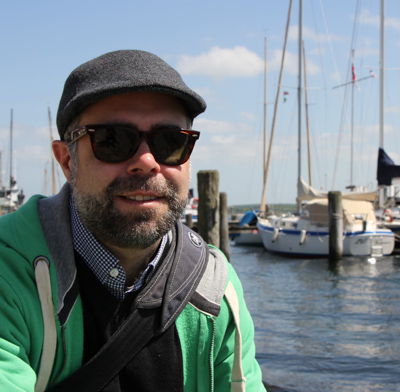von Roland Hachmann | Sep. 4, 2007 | Blog, Digital Culture, Digital Marketing, Digital News, Marketing, Marketing Trends, Social Media Marketing
At DMNews, there is a column about the impact of social media on email marketing, which is quite interesting:
Today’s younger generation is the single best predictor of future behaviors. And right now they are leveraging multiple social Web sites: MySpace and Facebook to chat with friends, Evite to send party invitations and LinkedIn to stay front and center for new business relationships. E-mail for these users has become a tool used strictly for the purpose of collecting business information — special offers, promotions and business information.
As we increase our usage of social networks, our use of e-mail will inevitably decline, reducing the success of e-mail marketing campaigns. Marketers need to take the time to understand what sites their users are comfortable in and then evaluate marketing opportunities in those spaces.
I don’t think it’s only that. (But it will be a large factor.) The other email killer is things like skype and other chat tools, mobile phone messaging, and RSS.
For any communication with your contacts, ther is a better way than email. Or at least there will be. With spam still filling most people’s inbox, they will undoubtedly move to other, uninterrupted channels and only open their email accounts to separate the „bacn“ from the spam.
So email marketing is not dead, as people will continue to use it. But in the next 5 years or so, we’ll probably see a shift in usage patterns, decreasing the target audiences attention to email. It is now, that we need to test the alternatives, so that we have working tactics in the future.
Try out producing widgets for facebook, offering RSS feeds (this should already be a no brainer!), sponsor chats and communities (or offer them yourself), and may be start advertising on the long tail of the web…
von Roland Hachmann | Sep. 4, 2007 | Blog, Digital Culture, Digital Marketing, Digital News, Social Media Marketing
Having written about a weekly digest of social media, I have overlooked this one here. Same idea: weekly links about the most intersting stuff from the social media news. Not sure who was first, but both are worth looking at.
von Roland Hachmann | Sep. 3, 2007 | Blog, Digital Marketing, Digital News, Marketing
Jeremiah Owyang posted an interesting thought-model of three essential elements of web strategy.
The three spheres, which are influencing each other, intersecting and overlaying are Business, Community and Technology:
The business sphere requires a strategist to understand the long term objective of a website and it’s goals.
The Community: The Web Strategist must understand (by using a variety of techniques and tactics) what users want. This is commonly known as User Experience Research which will create and craft a ‘mental model’.
Lastly, a Web Strategist needs to know how each and every tool and technology work, they’ll need to know the strengths, benefits, limitations and costs. This also applies to human capital, and timelines.
His viewpoint is that of a web strategist working within a company, being, for example, in charge of the corporate website. But it can also translate to digital planners in agencies, who need a similar profile.
von Roland Hachmann | Aug. 31, 2007 | Blog, Digital Culture, Digital News, Marketing Trends, Social Media Marketing
Steve Rubel explained why and how he started his lifestream – i.e. one central site for gathering any part of his digital trail: any Tweets, blogposts, Facebook notes, del.icio.us links and flickr photos. There is a wide range of different streams, that sometimes intersect at certain touchpoints (like I have my flickr images and my tweets on this page), which need to be aggregated.
A good idea, you can set one up easily at tumblr (30 seconds it says!). Steve even started a „reply stream“ to capture all the replies and comments to anything he published.
This is a logical continuation to bundling and remixing everything on the web using RSS. In the same way I am bundling all my favourite news sources (blogs, pictures, weather, press, etc.) on one startpage (netvibes, by the way – very recommendable), I should bundle all my output on one page for everyone to easily find. Which of course takes us to the other (still unsovled) side of the lifestream: how can I distribute content to all of these platforms and track the user traffic without having to visit all these sites all the time?
Is „lifestreams“ something many people will take up anytime soon? I don’t think so. It’s still to geeky, to much hastle, and most people have too few lifestreams anyway. But in a few years time, when more people will have an increasing digital trail, this might become a habit. We’ll see.
I think I will set one up shortly, once I am through with another – much more time consuming (and completely offline) – project that will keep me busy in the next 4 weeks. I’ll let you more about this soon on this site.
von Roland Hachmann | Aug. 30, 2007 | Blog, Digital Culture, Digital Marketing, Social Media Marketing
Just a quick tip for everyone interested in anything happening with social networking: Jeremiah Owyang publishes a weekly digest on social networking news around the net. You can find all digests under the tag „digest“ on his site. Well worth bookmarking/subscribing to.

 Wo ich sonst so bin...
Wo ich sonst so bin...